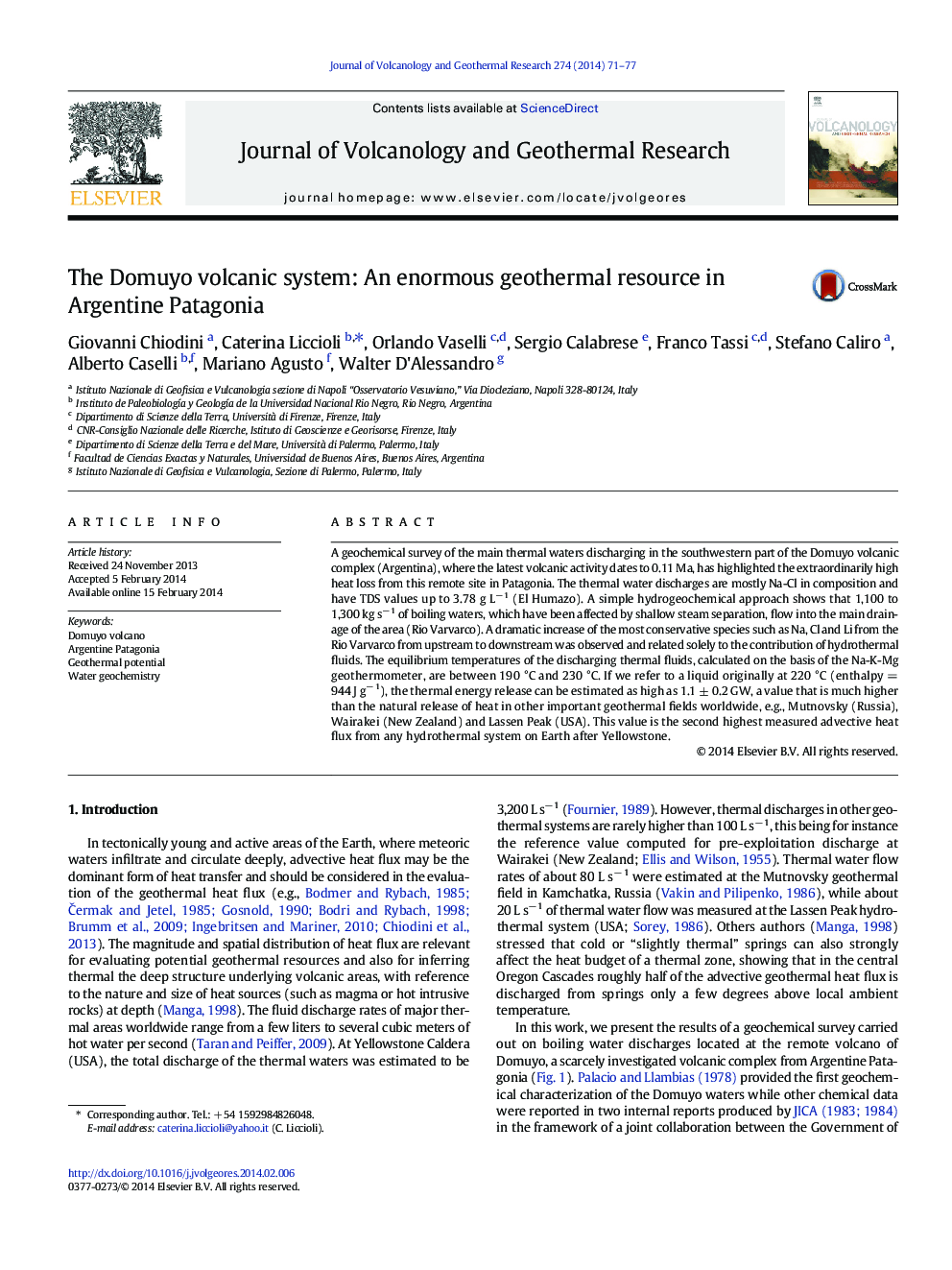| Article ID | Journal | Published Year | Pages | File Type |
|---|---|---|---|---|
| 4713261 | Journal of Volcanology and Geothermal Research | 2014 | 7 Pages |
•High flow rate thermal waters discharge from the SW sector of Domuyo volcano•Hot waters flow into creeks that reach the NS-oriented Varvarco River•Na-K-Mg geothermometer indicates reservoir temperature of 190 °C–230 °C•The estimated thermal energy release was as high as 1.1 ± 0.2 GW•Domuyo has the second highest advective heat flux worldwide after Yellowstone
A geochemical survey of the main thermal waters discharging in the southwestern part of the Domuyo volcanic complex (Argentina), where the latest volcanic activity dates to 0.11 Ma, has highlighted the extraordinarily high heat loss from this remote site in Patagonia. The thermal water discharges are mostly Na-Cl in composition and have TDS values up to 3.78 g L− 1 (El Humazo). A simple hydrogeochemical approach shows that 1,100 to 1,300 kg s− 1 of boiling waters, which have been affected by shallow steam separation, flow into the main drainage of the area (Rio Varvarco). A dramatic increase of the most conservative species such as Na, Cl and Li from the Rio Varvarco from upstream to downstream was observed and related solely to the contribution of hydrothermal fluids. The equilibrium temperatures of the discharging thermal fluids, calculated on the basis of the Na-K-Mg geothermometer, are between 190 °C and 230 °C. If we refer to a liquid originally at 220 °C (enthalpy = 944 J g− 1), the thermal energy release can be estimated as high as 1.1 ± 0.2 GW, a value that is much higher than the natural release of heat in other important geothermal fields worldwide, e.g., Mutnovsky (Russia), Wairakei (New Zealand) and Lassen Peak (USA). This value is the second highest measured advective heat flux from any hydrothermal system on Earth after Yellowstone.
